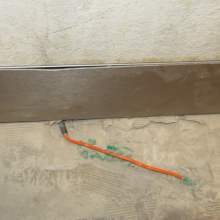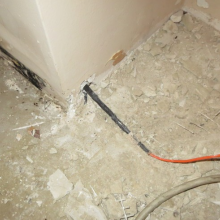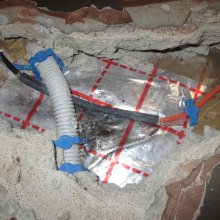Heating cable connectors
Heating cable connectors are used for the connection of resistance/heating cables (resistance) and supply cables – known as Cold Leads (CL). The connection is made via cable end sleeves, which are hard and inflexible. The connection must not be subjected to bending stress – there is a danger that the sleeve will literally sever the resistance wire during bending. Mechanical damage can also occur when the cable is bent immediately behind the connector – the sharper the bend, the greater danger there is.
Installation companies often do not realize that the connector heats up over up to half of its length (the connection between the resistance wire and the supply lead) in exactly the same way as the heating cable. Correct installation should therefore be carried out so that the connector is placed completely straight and covered with screed or flexible sealant not only along its entire length, but also plus 5 cm of the heating cable and 5 cm of the supply lead beyond the connector.



 Heating cables for direct heating systems
Heating cables for direct heating systems Heating mats for direct heating systems
Heating mats for direct heating systems Heating cable for semi-storage heating
Heating cable for semi-storage heating Heating mats for semi-storage heating
Heating mats for semi-storage heating
